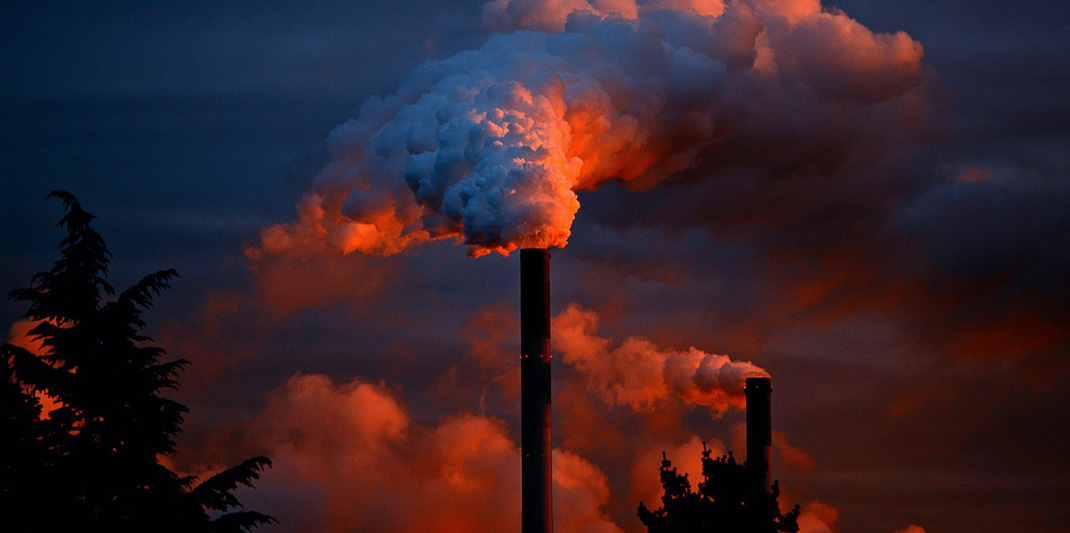In a groundbreaking report released by the Global Alliance on Health and Pollution, Air Quality Asia, and Boston College’s Schiller Institute for Integrated Science and Society, researchers place eliminating the burning of coal and fossil fuels at the top of 23 practical interventions that can reduce air pollution to both improve public health and combat climate change.
The report, “Air Pollution Interventions: Seeking the Intersection Between Climate and Health,” finds that "the single most effective action to achieve co-benefits that improve health and impact climate change is to phase out the use of coal and other fossil fuels, such as lignite and tar products, for power production.”
The World Health Organization estimates that ambient air pollution is responsible for 4.2 million deaths annually, with about 91 percent of the world's population living in places with unhealthy air quality. Additionally, as a growing body of evidence indicates, long term exposure to air pollution may worsen outcomes for patients infected by COVID-19.

Philip Landrigan
“Climate change and air pollution are major threats to human health and economic development that must be addressed. The COVID pandemic has raised the stakes considerably,” says report co-author and Professor of Biology Phil Landrigan, M.D., director of the Schiller Institute’s Global Observatory on Pollution and Health. “It is essential to understand the extent to which these issues can be tackled together. Policymakers can use this report to prioritize investments that are the most effective in generating co-benefits across health and climate.”
While some efforts—namely those that replace fossil fuels with renewable energy sources—improve both local health and favorably impact climate change, other, often politically popular programs are of limited value on either front.
"There has been an assumption that adverse conditions impacting climate change and air pollution are the same thing. This is not necessarily true," says Richard Fuller, Board Chair of the Global Alliance on Health and Pollution and a co-author of the report. "We wanted to see where the overlaps are, where investments can be directed that will improve health and also impact climate change."
The report's authors found that converting total power production from coal to renewable sources can be highly cost effective and fairly easy to implement, if the changes are made when new plants are brought online. On the other hand, the research team found that forest fire prevention, while beneficial from both health and climate standpoints, is difficult and can be costly.
The Top Five most effective interventions that improve both health—by reducing particulate matter smaller than 2.5 microns (or PM 2.5)—and climate—by reducing carbon dioxide emissions—according to the report, are:
- Replacing coal with renewable sources of energy for total power production
- Replacing diesel and gasoline-powered vehicles with electric vehicles in both the public and private sectors
- Eliminating uncontrolled diesel emissions
- Preventing crop burning
- Preventing forest fires
“ Climate change and air pollution are major threats to human health and economic development that must be addressed. The COVID pandemic has raised the stakes considerably. It is essential to understand the extent to which these issues can be tackled together. Policymakers can use this report to prioritize investments that are the most effective in generating co-benefits across health and climate. ”
Landrigan noted that the U.S. has reduced levels of the six major air pollutants by 70 percent since passage of the Clean Air Act in 1970. Western Europe, Japan and Australia have achieved similar gains. By removing lead from gasoline, the USA and other countries around the world have virtually eliminated airborne lead pollution. These actions have saved hundreds of thousands of lives, reduced health disparities, and increased children’s intelligence.
At the same time, the regulatory environment has also produced great economic benefit, Landrigan said. In the U.S., each dollar invested in air pollution control since 1970 has produced an estimated return of $30 (range, $4–88). In the same period, the U.S. Gross Domestic Product has grown by 250 percent, thus belying the oft-heard, but unfounded claim that pollution control costs jobs and stifles economic growth.
“Pollution can be prevented,” said Landrigan. “The success of countries like the U.S. in controlling pollution supports this premise. This report builds on that experience and provides countries with a roadmap that will help them to identify the most effective and cost-effective strategies for controlling pollution.”
Effective pollution interventions include upgrading and expanding mass transit systems, reducing sulfur content in fuel, converting coal-fired power plants to natural gas, and redesigning urban areas to promote walkable communities. The report's authors found that upgrading fuel quality, such as that required to meet EURO standards, can reduce emissions of particulate matter, nitrogen dioxide, and other pollutants detrimental to health, but has limited impact on climate change. Improved biofuel cookstoves can provide some relief from smoke in the immediate vicinity, but are not usually adequate on their own to achieve healthy household air quality.
Specifically, researchers sought to determine:
- which interventions effectively reduce air pollution and improve health quality
- which interventions can impact climate change
- which interventions can do both.
“ The economic shutdown that has followed the COVID-19 pandemic has brought about a remarkable worldwide reduction in ambient air pollution. These reductions are so great that they can be seen from outer space. These great gains show that cleaner air is possible. They enable us to imagine a world with permanent, improvements in air quality and wide-scale reductions in pollution-related disease. ”
Cleaner air in cities under lockdown to curtail the spread of coronavirus, evidenced by satellite imagery and ground photographs, illustrates not only how significantly power plant generation and vehicular exhaust contribute to air pollution but also how quickly air quality improves with reductions in carbon burning. Cleaner air is estimated to have saved 11,000 lives in Europe in April of this year and 77,000 lives in China in January and February, Landrigan said.
“The economic shutdown that has followed the COVID-19 pandemic has brought about a remarkable worldwide reduction in ambient air pollution,” said Landrigan. “These reductions are so great that they can be seen from outer space. These great gains show that cleaner air is possible. They enable us to imagine a world with permanent, improvements in air quality and wide-scale reductions in pollution-related disease.”
Through reports like Air Pollution Interventions, Landrigan said the Observatory is working to persuade world leaders to take advantage of the wide scale demand for clean air that has emerged in the COVID-19 pandemic and to “seize this unique opportunity to pivot away from fossil fuels to renewables.
“This is the perfect moment to make such a transition because the world has experienced very rapid growth in wind and solar energy over the past decade,” he said. “The fraction of electricity generated globally from wind and solar power is now 18 percent—up from only 4 percent in 2010. Renewables have also become much more cost-effective. The cost of producing electricity from solar cells has fallen in the past decade by 81 percent, from onshore wind by 46 percent, and from offshore wind by 44 percent. It is now cheaper in many countries to generate electricity from renewables than from any fossil fuel.”
Air Pollution Interventions was funded by a grant from the Clean Air Fund and produced by Global Alliance on Health and Pollution, AirQualityAsia and the Schiller Institute for Integrated Science and Society at Boston College, with contributions from Pure Earth.
More information and the full report are available at Global Alliance on Health and Pollution website.
Ed Hayward | University Communications | June 2020




